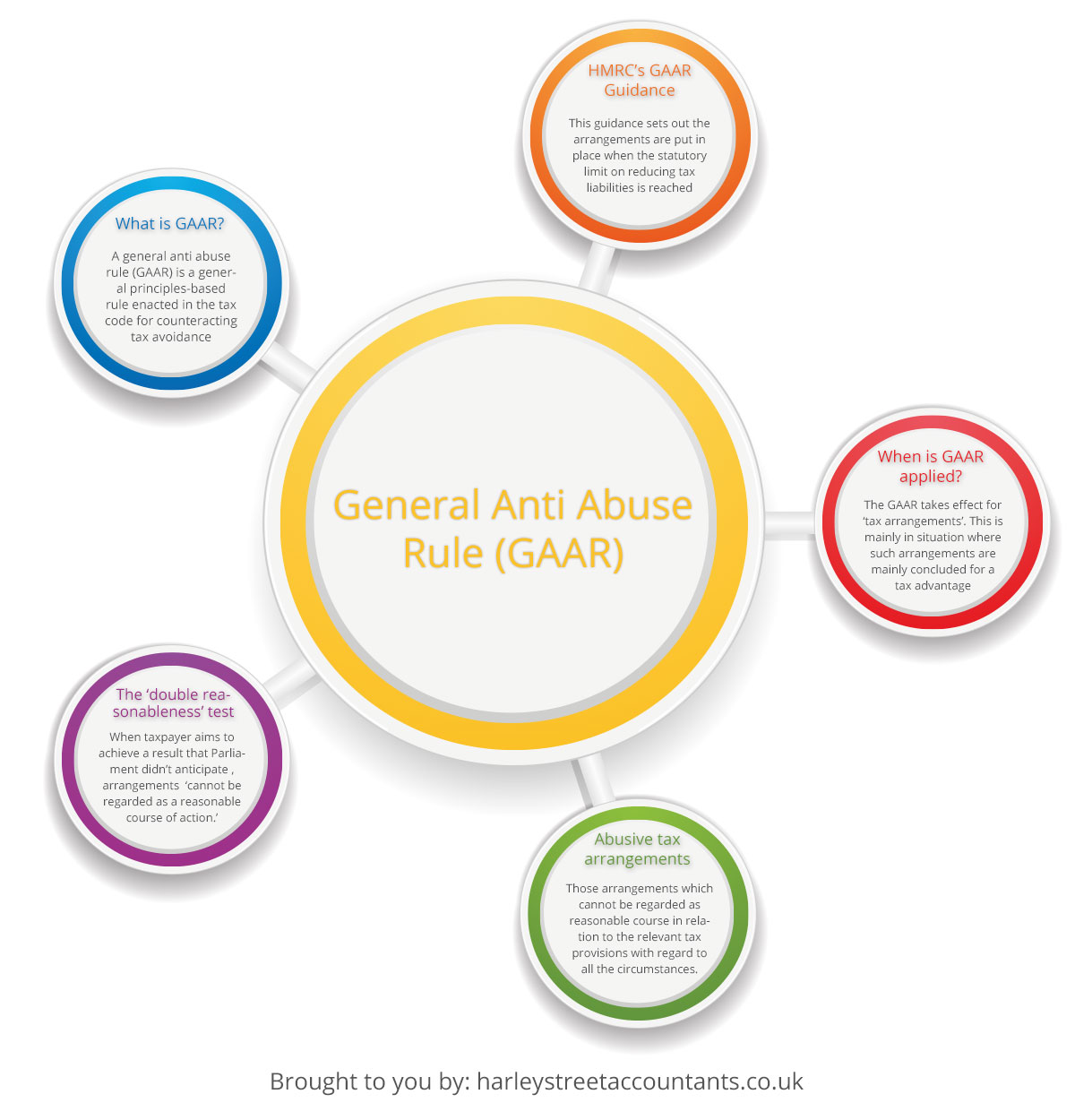General Anti-Abuse Rule (GAAR)- The Basics
 Many of you may be familiar with ‘GAAR’ as it is mentioned in tax avoidance schemes time and again. But, I bet you hardly know about the subject in more depth. So, here is a brief about General Anti-Abuse Rule to all of you.
Many of you may be familiar with ‘GAAR’ as it is mentioned in tax avoidance schemes time and again. But, I bet you hardly know about the subject in more depth. So, here is a brief about General Anti-Abuse Rule to all of you.
What is GAAR?
A general anti abuse rule (GAAR) is a general principles-based rule enacted in the tax code for counteracting tax avoidance. The UK has a general anti abuse rule in the tax avoidance operated by HM Revenue & Customs (HMRC) which came into effect from 17 July, 2013. GAAR is intended to encourage responsible tax planning and protect taxpayers from counteracting artificial tax schemes.
HMRC’s GAAR Guidance
HMRC also prepared and published extensive guidance in April 2013. This guidance sets out the arrangements are put in place when the statutory limit on reducing tax liabilities is reached.
When is GAAR applied?
The GAAR takes effect for ‘tax arrangements’. This is mainly in situation where such arrangements are mainly concluded for a tax advantage. The arrangements which involve corporation tax, income tax, capital gains tax, IHT, SDLT, and petroleum revenue tax, all of these come within the ranges of GAAR.
Abusive tax arrangements
Any arrangement having the effect of obtaining a tax advantage as its main purpose or one of its main purposes is known as ‘tax arrangements’. Whereas abusive tax arrangements are those arrangements which cannot be regarded as reasonable course in relation to the relevant tax provisions with regard to all the circumstances.
HMRC's GAAR guidance consists of a detailed summary which clearly set parameters for identifying abusive tax arrangements.
The arrangements like the following come under being abusive.
• When the amount of income or profits for tax purposes are significantly less than profit or gain
• Tax losses exceed the equivalent expense or loss
• Tax repayments or credits arise from arrangements where tax was not paid
• Transactions which is considerably different from market value or are on non-commercial terms
The ‘double reasonableness’ test
The double reasonableness test’ is one of the key principles of the GAAR. The double reasonableness test means GAAR operates when the taxpayer aiming to achieve a result that Parliament did not anticipate where the arrangements entered into ‘cannot be regarded as a reasonable course of action.’
If you like to discuss about GAAR and how we can help you manage the risk, don't be late and get in touch our specialist
tax accountants in London today.
 Many of you may be familiar with ‘GAAR’ as it is mentioned in tax avoidance schemes time and again. But, I bet you hardly know about the subject in more depth. So, here is a brief about General Anti-Abuse Rule to all of you.
Many of you may be familiar with ‘GAAR’ as it is mentioned in tax avoidance schemes time and again. But, I bet you hardly know about the subject in more depth. So, here is a brief about General Anti-Abuse Rule to all of you.
